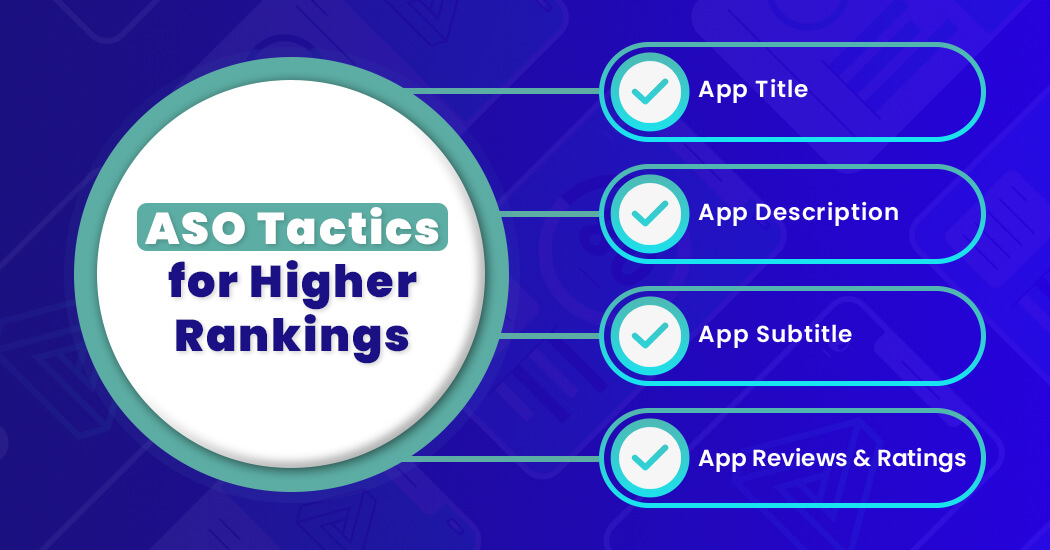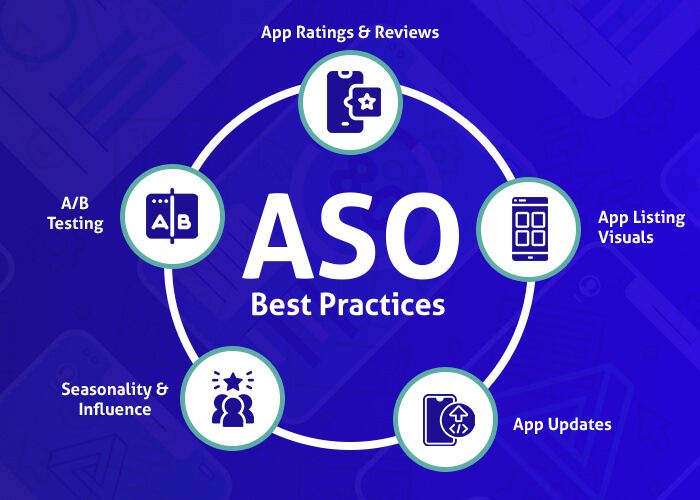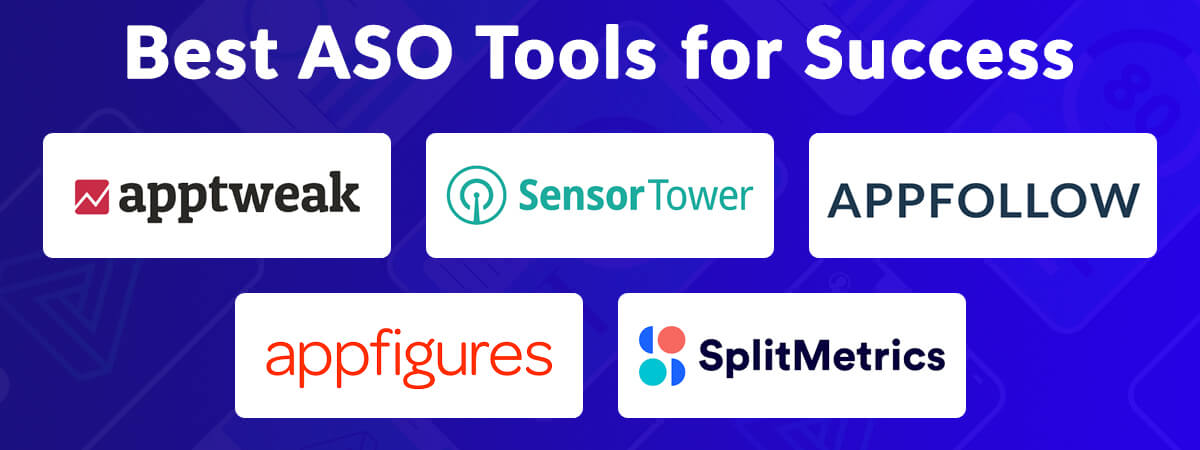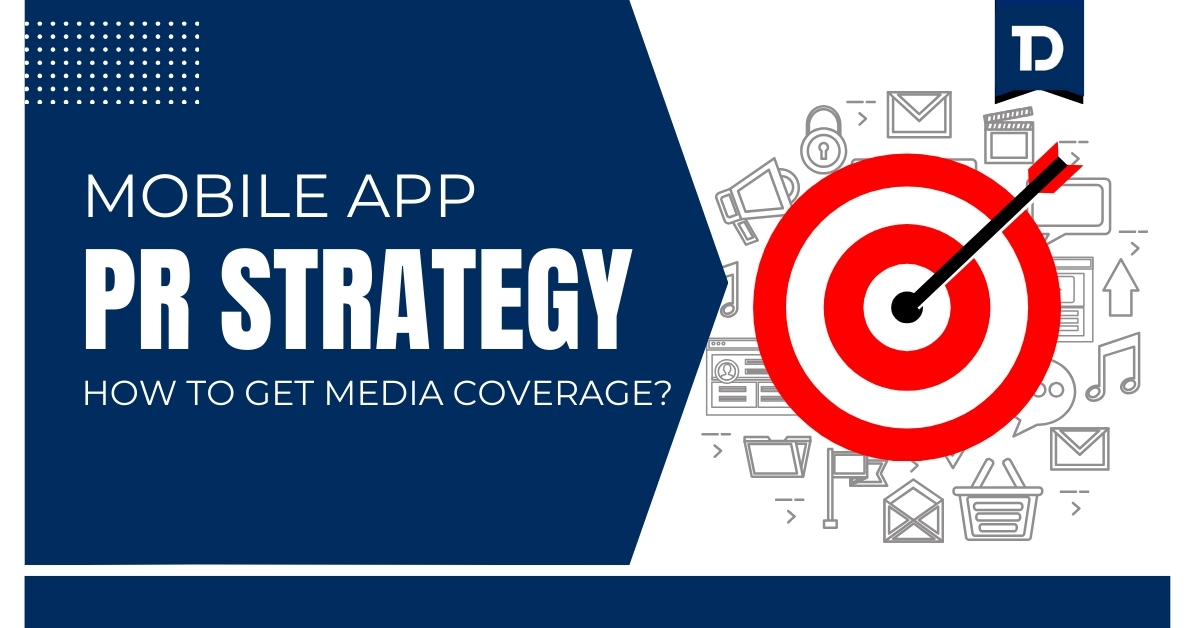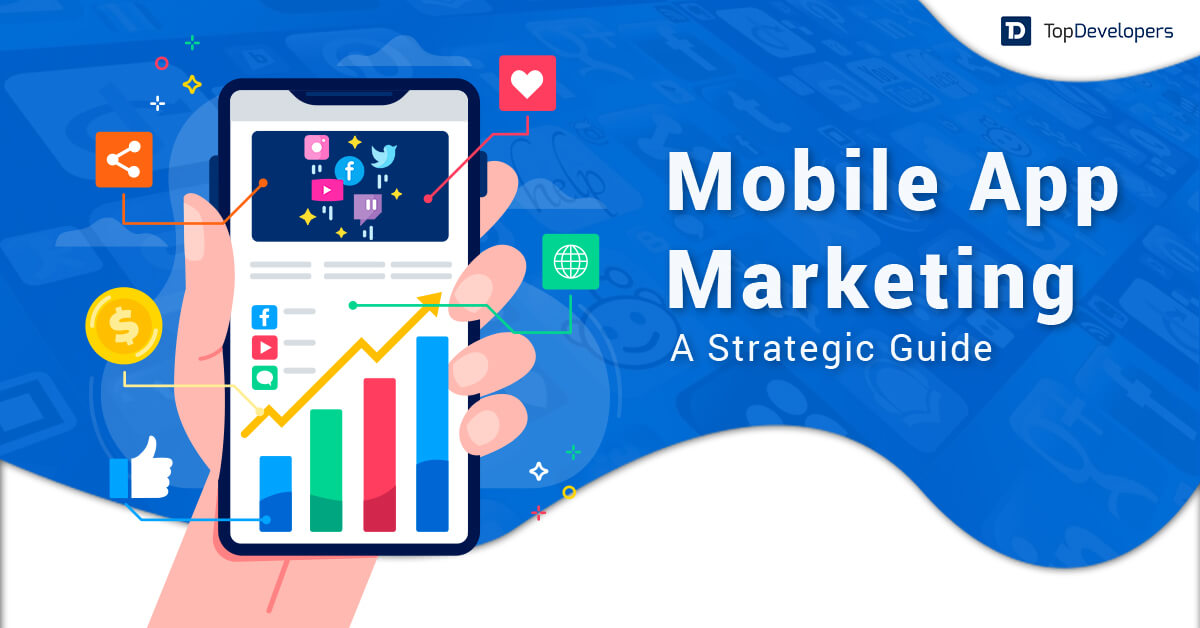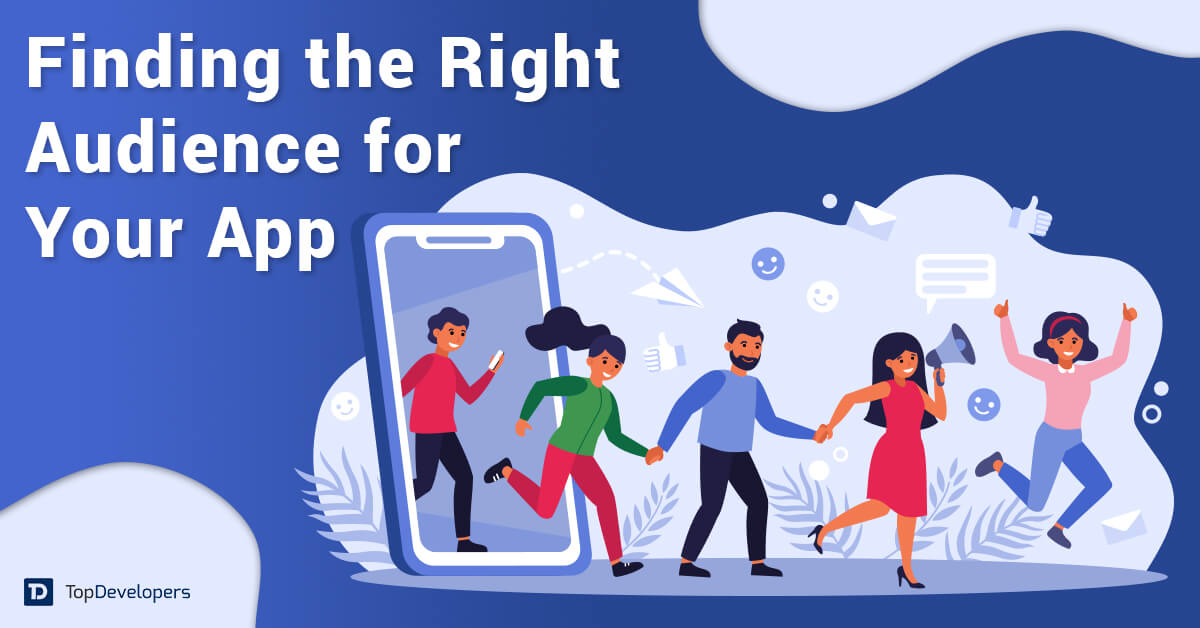
You may have developed the most advanced app with outstanding features that even your competitors don’t have.
But if your app isn’t visible to users on the app store, all goes in vain.
There are millions of apps in the Google Play and Apple’s App Store. How can you ensure that your app is visible to your target audience? Is there a way to boost your app’s visibility or ranking on the app store? Can you rank on the top position of the app store too for your app-related keywords?
Just like Search Engine Optimization (SEO), you have App Store Optimization (ASO) that highly impacts your presence on the app stores.
ASO or App store optimization strategy influences user acquisition by enhancing your visibility and discoverability on the app stores. It is the process of optimizing the elements of your app profile like title, description, icon, keywords, visuals, and more.
These optimizations if done the right way make your app profile look attractive and credible. Plus, it becomes easier for users to discover your app for related keywords. Thus, the higher the discoverability, the higher the download rate.
But how is ASO done?
If you are new to ASO or have a little idea but don’t know where to start, this guide is for you.
Table of Contents
- What is App Store Optimization (ASO)?
- Why App Store Optimization is important?
- ASO for Google Play vs. App Store
- 4 App Store Optimization (ASO) Strategies to Boost Your App Store Ranking
- How To Do ASO Keyword Research?
- Tips and Tactics for App Store Optimization (ASO):
- Top 5 App Store Optimization Tools for Success
- Frequently Asked Questions on ASO
What is App Store Optimization (ASO)?
App store optimization (ASO) is the process of improving an app’s visibility, reach, and conversion rates in app stores by adding relevant keywords, attractive visuals, and appealing descriptions.
Similar to SEO, the ASO strategy focuses on improving the app’s visibility so that it’s easily discoverable by the target users. There are several factors like subtitles, metadata, description, images, keywords, reviews, ratings, and downloads that affect your app’s ranking on the store.
ASO is often referred to as app store search optimization because its core purpose is to make your app search-friendly on the app stores.
The goal is to retain existing users, offer them upgrades and attract new users to eventually build a large loyal user base.
In simple words think of ASO like SEO but for your mobile app and not your website.
The primary goal of the ASO strategy is to boost the download rate. However, you do get bonus secondary goals like:
- High brand exposure
- App reviews and ratings
- Launch new app updates
- User Engagement
- Additional marketing benefits
Google Play and Apple Store are the top stores which you can target for optimization. However, you can also do app store search optimization on other app stores, like the Amazon App store, the Samsung Galaxy Store, and the Huawei AppGallery.
Why App Store Optimization is important?
“Google says that 40% of the apps are discovered through searches on its Google Play Store.”
So you might be doing perfect SEO for your website. But if you have failed to optimize your app store, you might be missing out on the users who will actually download and install your mobile application.
What businesses fail to understand about ASO is the users’ mindset. It is very likely that a user will search for an app on Google. In 90% of the cases, the app user will explore the Google Play Store or Apple Store for the app. Sometimes, users also fall in love with apps that they find on the recommendation list on the app store and download them on a hunch.
Another survey indicates that 82% of the users find new apps on the app store or its recommendation list.
But there are 3.3 million apps on Google Play Store and over 1.1 million on App App Store. How can you outrank them?
ASO techniques, like including keywords your users might find your app for, boost your app’s visibility on the stores.
So, don’t rely on the mercy of the app stores and take your app’s ranking into your own hands.
ASO for Google Play vs. App Store
Google Play Store and Apple’s App Store may be similar from a user’s point of view. But from a business owner’s perspective, both are quite different.
The similarities are:
- Both platforms require you to submit the app for approval
- The approval takes somewhere from 24 hours to a few weeks, depending on the complexity of your app.
- Both the app stores include features where you can describe your app, and its utility, collect reviews, and add photos.
But the best thing about the App Store is that it offers keyword fields and subtitle sections. This makes it easier for you to add multiple keywords to your app, which increases the chances of its discovery and high ranking.
Google Play doesn’t have any such fields. But the store does have a description section where you can describe the features and utility of your app.
The point to note here is that whatever features the app stores offer, you need to use them to their full potential to increase your app’s visibility.
Apple App Store Ranking Factors
Have a look at the factors that can help you optimize your app store.
- App name
- App subtitle
- App URL
- App description
- Right categories
- Positive Ratings
- Accurate Keywords
- Text relevance
- User behavior
- App Downloads
- Apple Search Ads
- Promote in-app purchases
- Publish in-app events
- Quality and quantity of ratings and reviews
- Installs and engagement
- Reviews
- App updates
- In-app purchase titles and descriptions
Google Play Store Ranking Factors
Consider these factors while doing ASO on the Google Play Store.
- App title
- App short description
- App long description
- Installs and engagement
- In-app purchase titles and descriptions
- User retention
- Editorial value
- App Performance
- Quality of App
- Download rate
- App Localization
- App User Reviews and Ratings
- Frequency of App Update
- Localization and Globalization
- Visual Appeal
- Relevance Keywords
4 App Store Optimization (ASO) Strategies to Boost Your App Store Ranking
Here are the top 4 factors that affect your ASO strategy more than anything else.
App Title
The title is the first thing that attracts a user to your app. So, be wise with your app name/title.
- Try to include relevant keywords in your title for discoverability.
- Do not go for titles that push away the users for privacy concerns.
For example, use the title “Flexjobs: Remote Jobs & Freelancing”. - Avoid titles like “App for remote jobs and freelancing”.
- Don’t change your title frequently just to keep your profile active.
You may not know but once your app starts to gain recognition, people talk about it. People recognize your app by its title/name.
If you change that, other users who came looking for your app by trusting their friend’s feedback won’t find it.
So, you will risk losing existing and new users by frequently changing your app name/title.
Tip: Take your time. Think of a creative app title or name that shows your credibility, includes keywords, and tells about the services you offer.
App Description
App descriptions are not for the app store. But for your users.
App stores don’t give much importance to descriptions. However, users do read about the app before downloading it.
This app store search optimization factor is solely to impress users.
- Google Play and App Store gives you 4000 characters to describe your app features and benefits.
- But no one will ever click on “see more” to read 3 paragraphs of features.
- The top 3 lines are what you have to attract your users.
- Sometimes, people do click on “see more”. They do not read every word but scan through the content.
- So, make your app description user-friendly and readable.
- Use bullet points, shorter sentences, and style fonts to stand out.
- Write the first 3 lines of your app description irresistible for the user to ignore.
- Ignite curiosity or touch a user’s pain point.
- Be simple yet smart with your app description.
Tip: Our tip is to give some time to write your app description. Once done, share it with your friends and colleagues for feedback.
App Subtitle
App subtitles are the lines that you see just below the app’s title/name.
Similar to app titles, subtitle is an important part of app store keyword optimization. This is another section where you can use your keywords and show what your app is all about.
For example, Canva says it’s all about graphic design and logo. Similarly, LinkedIn smartly showcases it for networking and jobs.
- Include keywords in your subtitle
- Select 2-3 keywords your app is best known for.
- Write a one liner with your keywords or just mention the keywords with commas.
- Make it different from the title.
- Do not use the same keywords for title and subtitle.
- Subtitles are to give extra information to the users other than the app name/title.
Tip: Use title and subtitle to include all your main keywords.
App Reviews & Ratings
Reviews and ratings are social proofs of your credibility and build trust in new users.
Who would you trust – an app with 10 reviews or an app with at least 1000 reviews?
We all know the answer.
The app title and keywords may attract the user. But it is the reviews that will push them to download your app.
- If you built a new app, share it with your family, friends, and colleagues.
- Ask them to share their reviews on app stores.
- Ask for reviews from your existing users. Send them push notifications once they have completed a set of actions.
- Reply to all the reviews you receive.
- Be polite to negative reviews and take it as constructive feedback.
- Even if your app is not new and you have a considerable number of reviews to attract new users, don’t stop at collecting reviews.
- The more, the merrier.
Ratings are more important than reviews as you can see ratings on the side of the app title. Users always tend to trust and download apps with higher ratings.
So the best ASO strategy is to get ratings from your customers within 72 hours of them using the app. Plus, solicit the ratings within your app functions.
This makes it easier for users to rate your app in 1-2 clicks without toggling between the app and the app store.
How To Do ASO Keyword Research?
Similar to SEO, keywords are a crucial part of ASO. Keywords are how users are going to find your app on the app stores.
So, use all the elements of your app profile to include keywords that best align with what your target audience searches.
But first, you need to do keyword research for your app store optimization.
Here’s how you can do it.
- Go to any keyword research tool.
- Enter your seed keywords or keywords related to your app/services.
- Start with general terms or keywords, then go for broad matches and related keywords.
- Sort out the keywords with search volume.
- Do not forget to consider the keyword intent.
- Strike a balance between popular keywords and keywords with less competitiveness.
For example, you are to launch a video maker app. So start with the general term, “video maker”. Then go for keywords like “music video maker”, “free video maker” and “video editor”. For related terms you can use “ai video maker”, “YouTube video maker”, “reels video maker”, “YouTube shorts video maker” and terms like these.
Popular keywords will be more difficult to rank for. But you cannot completely ignore them. So you have a mix of popular keywords and terms with average search volume which are easier to rank.
Tips and Tactics for App Store Optimization (ASO):
Here are some winning tips and best practices to help you create a successful ASO strategy that results in high app rankings.
App Ratings & Reviews:
Consider them the voice of your users. Positive ratings and reviews build trust, improve credibility, and can influence users to download your app over competitors.
Respond to both positive and negative reviews promptly. Address concerns and thank users for feedback. Also, work on user suggestions and negative feedback to improve your mobile application. This shows you’re engaged with your user base.
App Listing Visuals:
First impressions matter! High-quality screenshots and app icons showcasing your app’s features and functionalities are crucial.
Tailor them to your target audience and consider using A/B testing to see which visuals resonate most, leading to more installs. You can add a video to provide more information on your app to users.
App Updates:
Regularly update your app with new features, bug fixes, and performance improvements. This demonstrates you’re actively developing and maintaining the app, keeping users engaged.
Update descriptions within the app stores to reflect new features and address user feedback to improve your app’s overall value proposition. You can check new app trends and technologies to update your app with relevant ones to stay ahead of competitors in the market.
Seasonality & Influence:
Capitalize on seasonal trends and events. Update app visuals and descriptions to reflect holidays or popular occasions to gain visibility during these peaks.
Partner with relevant influencers to promote your app. Leverage their audience to reach new users who might be interested in what your app offers.
A/B Testing:
Don’t guess – test! A/B testing allows you to compare different versions of app store elements like screenshots, titles, and descriptions.
See which variations drive more clicks and installs. Continuously optimize your app store listing based on data to maximize your ASO efforts.
Top 5 App Store Optimization Tools for Success
Here are some of the top App Store Optimization (ASO) tools:
AppTweak
AppTweak is a one-stop destination for all app store optimization services. From keyword research to competitor analysis, monitoring, and app listing, the platform helps you manage all ASO tasks in one place.
The app store marketing & intelligence platform helps to optimize your apps’ organic and paid performance in the app stores
The best feature of this ASO tool is that you can monitor your app’s performance based on the relevant keywords for each app store. Thus, it will help you identify areas you are missing out and need improvement as per your targeted app stores.
Sensor Tower
Valuable data insights can help you refine your ASO strategy further. Sensor Tower is a recognized intelligent market analytics platform, built on a cutting-edge data science model.
The market-leading digital intelligence will help you with app data like download estimates, competitor tracking, and other market analytics to help make informed decisions.
With Sensor Tower you can gain insights into download trends for your app and competitors. Plus, you can also understand user acquisition patterns.
These data help you optimize your app accordingly to boost its discoverability.
AppFollow
AppFollow is one of the best app store search optimization tools. The tool helps in keyword research, app rank monitoring and data analysis.
Like AppTweak, AppFollow helps you find relevant keywords to target. But it goes a step further, analyzing user reviews to understand the language your target audience uses when searching for apps which ultimately helps to understand and elevate your app’s reputation.
Plus, it also helps you understand user sentiment, their pain points and current market trends. The ASO tool includes tools to review management and automation, organic app performance analysis, competitor research, and app performance monitoring.
AppFigures
AppFigures is another tool that offers all app store optimization services in one place. This tool is more about tracking your app’s performance on app stores and analyzing your competitors.
You can use AppFigures to get valuable insights into your app category, including market size, competitor performance, and user demographics.
Plus, you can easily track metrics like downloads, revenue, user engagement, and retention rates. This helps you monitor the effectiveness of your ASO strategy and improve it for the better.
SplitMetrics
SplitMetrics is one of the best ASO tools to optimize your app listing visuals. It provides products & services for mobile app growth
You can test different variations of your app screenshots, icons, titles, and descriptions. This helps you identify which combinations resonate better with users and drive the most downloads.
By identifying the appealing visuals for your app, SplitMetrics helps you make your app profile attractive on the store. This results in high conversion rates and more downloads.
Frequently Asked Questions on ASO
Is ASO part of SEO?
No, ASO is not part of SEO. ASO stands for App Store Optimization, which helps improve your app’s visibility in app stores like Apple App Store and Google Play. SEO is for Search Engine Optimization, used for websites.
How ASO will impact my app rankings?
ASO can significantly boost your app’s ranking in app stores, making it more discoverable and leading to more downloads.
How do I optimize my app store listing?
Optimizing your app store listing involves using relevant keywords, creating a compelling description, and showcasing attractive screenshots and app icons. This will make your app more discoverable and appealing to users. You can also add videos regarding your app so app users get an idea of your app.
 Avantika Shergil
| May 16, 2024
Avantika Shergil
| May 16, 2024
Avantika Shergil is a technology enthusiast and thought leader with deep expertise in software development and web technologies. With over 8 years of experience analyzing and evaluating cutting-edge digital solutions, Avantika has a knack for demystifying complex tech trends. Her insights into modern programming frameworks, system architecture, and web innovation have empowered businesses to make informed decisions in the ever-evolving tech landscape. Avantika is passionate about bridging the gap between technology and business strategy, helping businesses build customized software and website, and understand about different tools to leverage effectively for their ventures. Explore her work for a unique perspective on the future of digital innovation.
